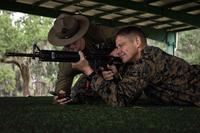
A "dead heat" is a race, campaign or other contest that is so close that it is impossible to predict the winner.
That's what it looks like when it comes to the continuing race for cyber warfare supremacy, and experts agree this will be the case for the foreseeable future. With images of the Cold War and its associated arms race, as cyber warfare, cyber espionage, cyber attacks and cyber terrorism continues to evolve the top three leaders (US, Russia and China) are jockeying for position.
Leading economists have warned that the growing education gap between the U.S. and other industrialized countries will threaten our economic status and growth. I would add that this gap has a direct link to our national security. President Obama's economic stimulus plan has billions of dollars for schools that adopt new plans to boost teacher quality, hike test scores and come up with innovative ideas. If successful, this will help in about 15 years, but by then we may be ranked second, third or fourth in the global scientific and technical research and development space that drives our offensive and defensive military capabilities -- particularly cyber security. This would have catastrophic consequences with respect to our national security.
In any contest there is an outside chance a long-shot could come from behind and win. The race for cyber warfare dominance is no different. In the recently updated "Cyber Warfare Capabilities Estimate" (2009 version) those who could break out of the pack and come from behind and take a leadership position for cyber dominance are listed below.
1. Iran
2. India
3. North Korea
The development of cyber capabilities is directly dependent on two factors. The first factor is determination and the second is smart people. While testifying before the U.S. Congress I was asked how many people in the world could do what I did -- referring to a hacking demonstration I had just performed. My answer remains the same: tens of thousands if not hundreds of thousands. The bad news is this that number is growing as countries, extremist groups and terrorists support people developing skills in this area.
This is an arms race that we cannot afford to lose. That is the feeling of all three of the current leaders in the contest to dominate the cyber warfare domain. One thing we all must remember is that in this arms race, science and technology advances will continue to push the finish line further out so we will not get there any time soon.
It is important to remember: this is Cyber Warfare 1.0. The next iterative release is on the whiteboards of think-tanks right now.







